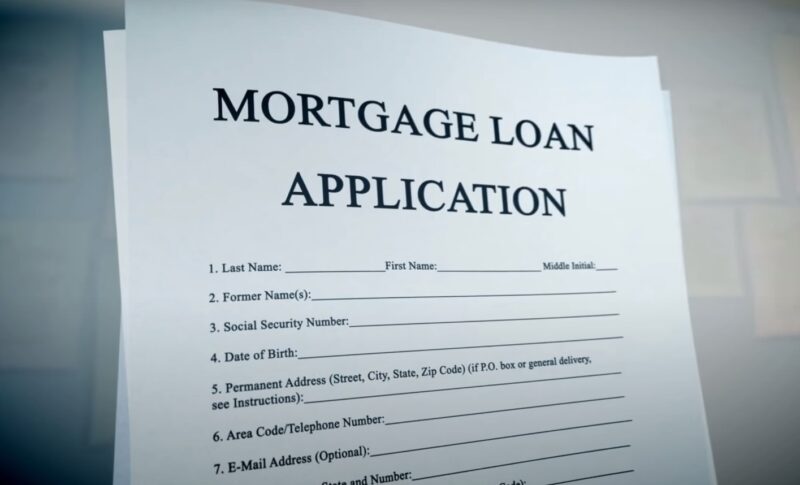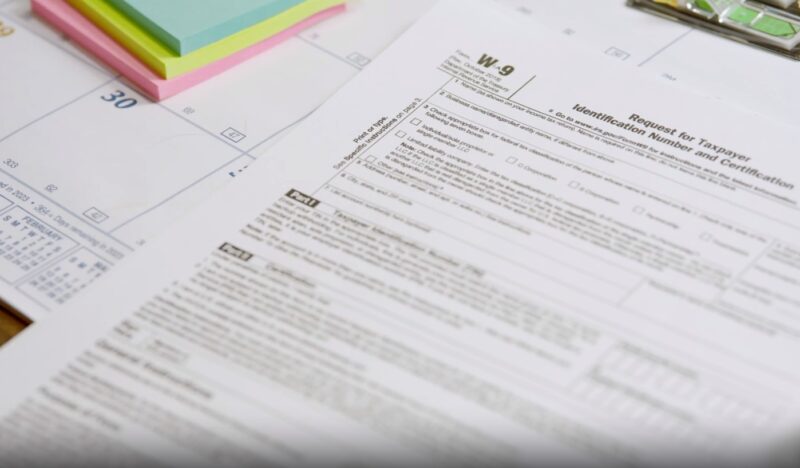When you sign your home loan documents, you start a new phase in the home-buying process. This critical step sets in motion a series of actions that lead up to you owning your home. Understanding what happens after these documents are signed is crucial.
It involves loan processing, closing procedures, and post-closing responsibilities. This guide aims to provide a clear and concise overview of these steps, ensuring you are well-prepared for what lies ahead in your journey to homeownership.
Step 1 – Loan Processing and Approval
Final Review

The final review is the first step after your loan documents are signed. In this stage, your lender carefully revisits your application to ensure that every detail is in order. They check the completeness and accuracy of the documents, ensuring everything aligns with their criteria. This step is critical as any discrepancies can delay or even derail the loan process.
Lenders also conduct a final verification of your credit score and employment status. This is to ensure there haven’t been any significant changes that could affect your loan eligibility. It’s a precautionary measure to protect both the lender’s investment and your financial stability.
Underwriting
The underwriting process is where your financial life is scrutinized under a microscope. The underwriter, a key player in the loan approval process, evaluates your ability to repay the loan. They examine your income, debts, assets, and the property’s appraisal value, cross-checking these against the lender’s requirements.
This process is intricate, as the underwriter must balance risk management with the goal of approving your loan. The underwriting stage can be nerve-wracking for buyers, but it’s a necessary step to ensure the loan is safe and suitable for both parties.
Approval

The approval stage is the light at the end of the tunnel in the loan process. Once the underwriter is satisfied and all criteria are met, your loan is officially approved. This approval is a significant milestone, signifying that you have passed all the financial hurdles set by the lender.
It’s a moment of relief and celebration, as it paves the way for the final steps in the home-buying process. This approval also means that the lender trusts in your ability to repay the loan, it’s proof of your financial stability.
Step 2 – Preparing for Closing
Before the official closing of the deal, a final walkthrough of the property is typically scheduled. This walkthrough is your opportunity to inspect the property one last time, ensuring it’s in the agreed-upon condition. During this visit, you can verify that all the repairs, if any were agreed upon, have been completed to your satisfaction.
It’s also a chance to ensure no new issues have arisen since your last visit. This step is crucial as it is the last chance to address any concerns before the property officially becomes yours.
Closing Disclosure Review

The Closing Disclosure is a critical document you receive at least three days before the closing date. This document details the final terms of your loan, such as the interest rate, monthly payments, and the breakdown of closing costs. It’s essential to review this document thoroughly.
Comparing it with the initial Loan Estimate ensures that there are no surprises or unexpected changes. Understanding your Closing Disclosure helps you prepare financially for the closing and ensures you are aware of the long-term commitments you are making.
Scheduling the Closing
The closing date is a significant day in the whole process, marking the finalization of your purchase. It’s scheduled once your loan is approved and involves coordination with various parties, including your real estate agent, lender, and possibly an attorney.
Confirming the date, time, and location of the closing is essential, as this is when you will sign the final documents and complete the transaction. This day requires careful preparation, as it’s not just a formality but a legally binding conclusion of your home purchase journey.
Step 3 – The Closing Day
Document Signing
The closing day involves signing a multitude of important documents. Among these are the mortgage note, which is your agreement to repay the loan, and the mortgage or deed of trust, which grants the lender a lien on your property.
The volume of paperwork can be overwhelming, but each document is crucial in legally transferring ownership to you. It’s important to understand what you’re signing, so don’t hesitate to ask questions during this process.
Paying Closing Costs

On closing day, you are also required to pay the closing costs. These costs can include a range of fees, such as loan origination fees, appraisal fees, title insurance, and others. These costs vary and can represent a significant expense, so it’s important to be financially prepared.
Understanding and budgeting for these costs in advance can alleviate stress and ensure a smoother closing process.
Receiving the Keys
The moment you receive the keys to your new home is the culmination of your home-buying journey. Once all the documents are signed and the closing costs are paid, the property is officially yours. This moment is often filled with a mix of excitement, relief, and satisfaction.
It marks the beginning of a new chapter in your life, filled with the joys and responsibilities of homeownership. In the next sections, we’ll delve further into what happens after closing day, including post-closing activities and long-term considerations for managing your mortgage and home.
Stay tuned for more insights as we continue to explore the comprehensive journey of homeownership.
Step 4 – Post-Closing Activities
Recording the Deed
After the excitement of the closing day settles, the legal process of recording the deed takes place. This is a vital administrative step where the deed to your new home is officially recorded with the local government, typically the county recorder’s office. This process legally transfers ownership from the seller to you and is a matter of public record.
The recording of the deed is usually handled by your lender and title company, but as a new homeowner, it’s prudent to confirm that this step has been completed. Ensuring that the deed is recorded correctly safeguards your legal ownership of the property.
Setting Up Your Home

With the keys in your hand, the next exciting phase is moving into your new home. This involves not just the physical moving of your belongings but also setting up utilities such as electricity, water, gas, and internet.
Additionally, updating your address for mail, subscriptions, and official documents is essential. You might also embark on home improvements, renovations, or decorating to make the space truly yours. This phase is about turning a house into a home, reflecting your personal style and needs.
Home Insurance and Warranties
Ensuring that your homeowner’s insurance is active from day one is crucial. Home insurance provides protection against damage and liability and is often a requirement of your mortgage. If you opted for a home warranty, understand its coverage and how to make claims.
Home warranties can offer additional peace of mind, covering repairs and replacements of major home systems and appliances. Both insurance and warranties are key components in protecting your investment and providing financial security.
Managing Your Mortgage
First Mortgage Payment
Your first mortgage payment usually comes due about a month after the last day of the month in which you closed on your home. It’s important to be clear about this date and the payment process.
Some lenders offer various payment methods, including online transactions, mail, or automatic deductions from your bank account. Staying on top of your mortgage payments is crucial for maintaining good credit and avoiding late fees.
Escrow Account Review
If your mortgage includes an escrow account for property taxes and homeowner’s insurance, your lender will manage these payments on your behalf. However, it’s important for homeowners to periodically review their escrow account statements.
This ensures that payments for taxes and insurance are made accurately and on time. Regular reviews also help you anticipate any changes in escrow payments due to adjustments in property taxes or insurance premiums.
Amortization
Understanding your loan’s amortization schedule is key to comprehending how your mortgage payments are applied over time. In the early years of your mortgage, a larger portion of each payment is typically allocated towards interest rather than the principal.
As time progresses, this balance shifts, with more of your payment going towards reducing the principal balance. Familiarizing yourself with this schedule can help you plan for future financial decisions, such as refinancing or making extra payments.
Long-term Considerations
Refinancing Options
As you settle into your home and time passes, you might consider refinancing your mortgage. Refinancing can offer benefits like lower interest rates, reduced monthly payments, or the ability to change the term of your loan.
It’s important to weigh the costs and benefits of refinancing carefully. Understanding the break-even point and how refinancing aligns with your long-term financial goals is essential.
Tax Implications

Homeownership can bring several tax implications. For many homeowners, property taxes, mortgage interest, and certain closing costs are tax-deductible. These deductions can lead to significant tax savings.
However, tax laws are complex and can change, so consulting with a tax advisor is advisable to fully understand the benefits and responsibilities that come with owning a home.
Building Equity
One of the long-term benefits of homeownership is the building of equity. Equity is the portion of your home that you truly “own” – the difference between the property’s value and the amount you still owe on your mortgage.
As you make mortgage payments and as your property appreciates in value, your equity increases. This equity can be a powerful financial tool, potentially used for home equity loans, lines of credit, or as a nest egg for the future.
FAQs
How long does it take to process the loan after signing the documents?
The time to process a loan after signing the documents can vary but typically takes a few days to a week. This period allows the lender to conduct a final review and complete the underwriting process. The exact timeline can depend on the lender and any additional verifications they might require.
Can I back out of a home loan after signing the documents?
Generally, once you sign the home loan documents, you are committed to the loan. However, the United States has a three-day rescission period for refinancing loans, allowing borrowers to cancel the loan without penalty. This does not apply to new home purchases. It’s important to be certain before signing any loan documents.
What happens if there are errors in the loan documents discovered after signing?
If errors are discovered in the loan documents after signing, contact your lender immediately. The lender will typically work with you to correct the errors. Depending on the nature of the mistake, it may require re-signing documents or issuing an amendment or addendum to the original agreement.
Is homeowners insurance required before I can close on a home loan?
Yes, most lenders require proof of homeowners insurance before closing on a home loan. This insurance protects the lender’s investment in your home and must be in place from the day of closing. The coverage should be sufficient to rebuild the home in case of a total loss.
How do I set up an escrow account for my mortgage, and what does it cover?
An escrow account is typically set up by your lender during the loan closing process. It’s used to pay ongoing expenses associated with your home, like property taxes and homeowners insurance. Each month, a portion of your mortgage payment is deposited into this account to cover these expenses.
What should I do if I can’t make a mortgage payment on time?
If you’re unable to make a mortgage payment on time, contact your lender as soon as possible. Many lenders offer solutions or temporary relief options, like forbearance or loan modification, especially in cases of financial hardship. It’s important to communicate openly with your lender to avoid penalties and protect your credit score.
Summary
From final loan processing to setting up your new home, each step plays a significant role in realizing your dream. It’s important to stay informed and proactive throughout the process, from ensuring all legal documents are correct to managing your mortgage payments responsibly.
